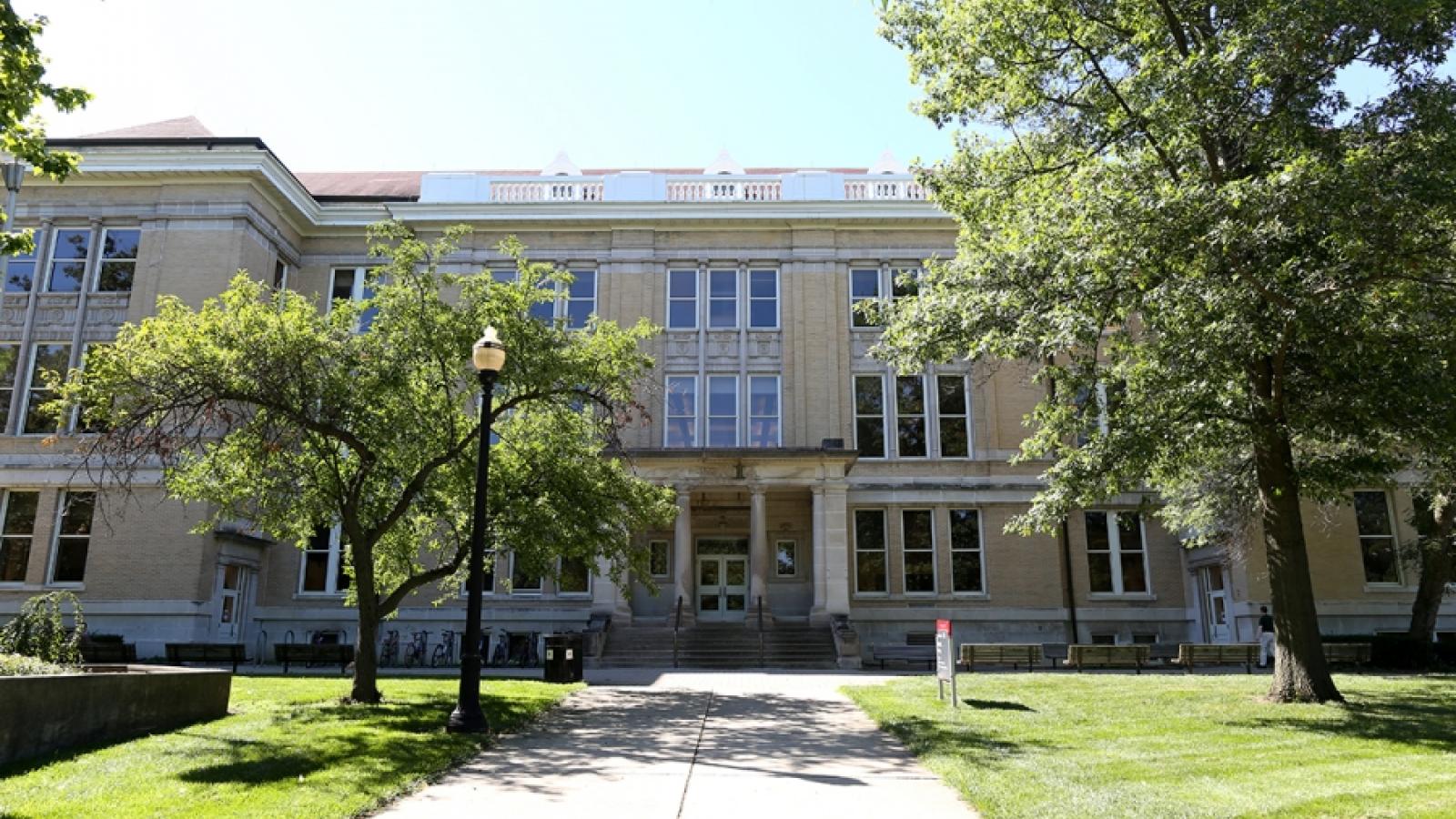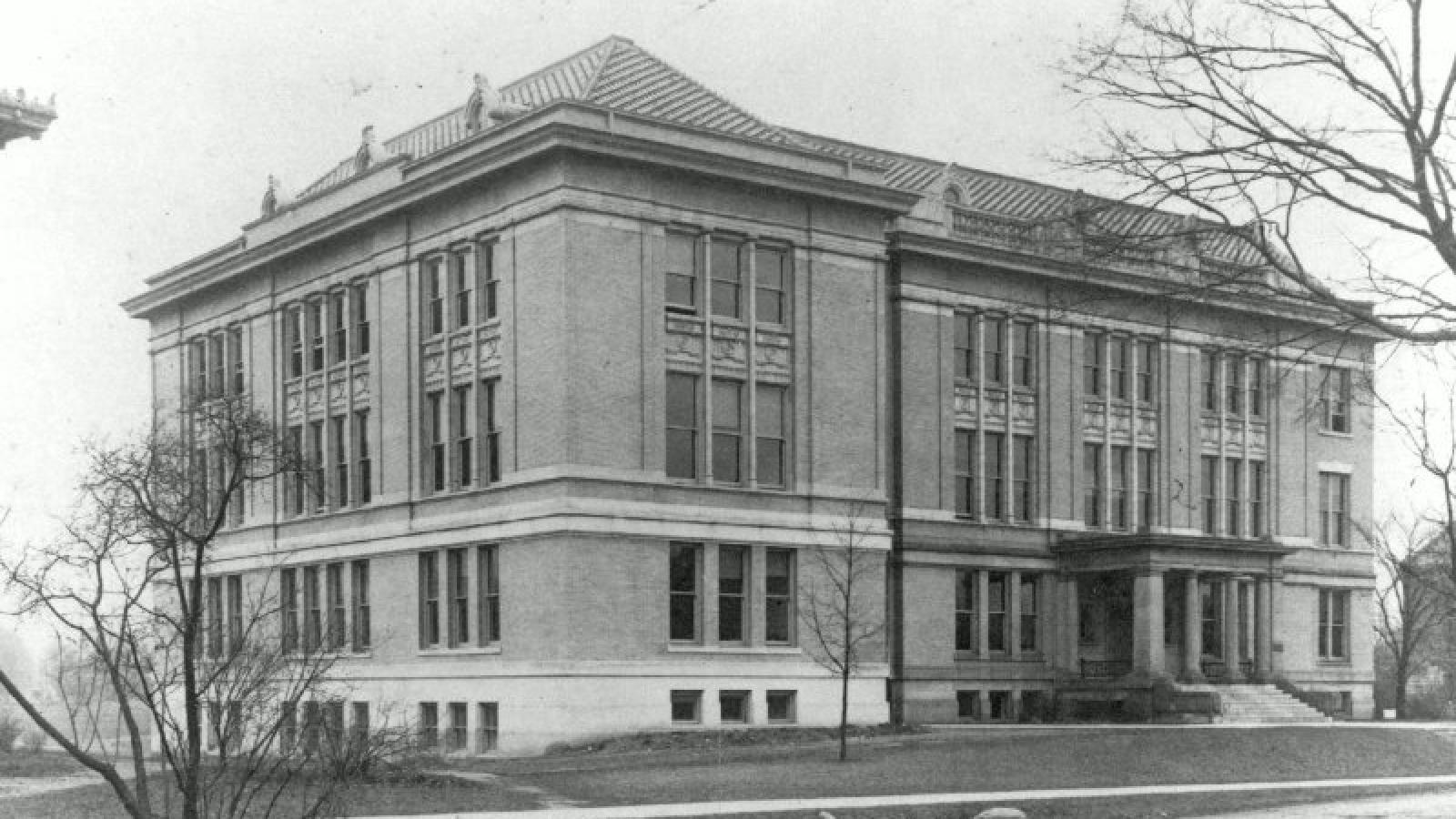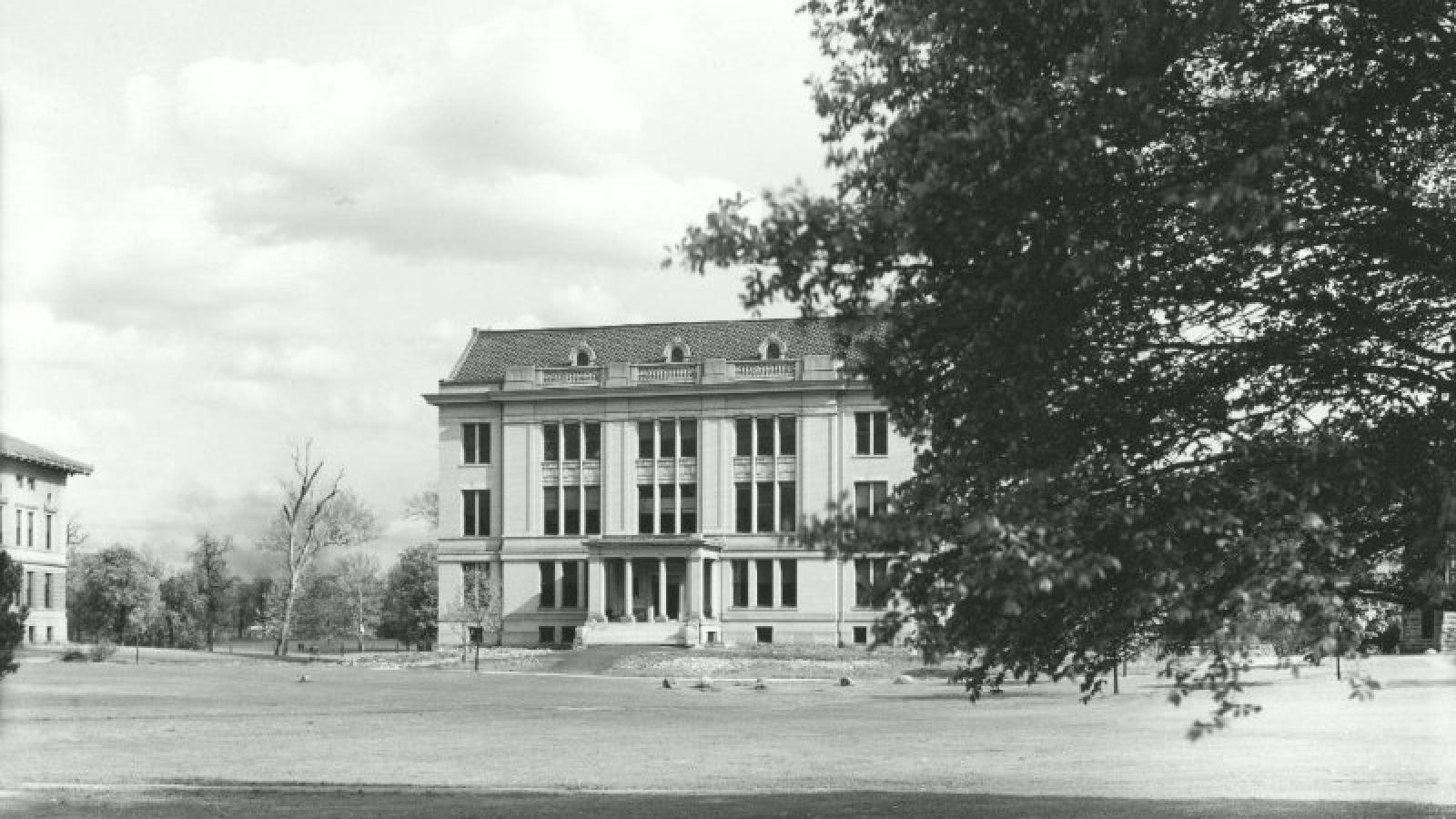First opened in 1905, Mendenhall Laboratory is noted for the "fossil-like" artwork on the first floor. Spiral, designed by David Culver, is composed of inlaid stone along the floor, a stone wall, and a series of geology panels with samples of stones and minerals incorporated along the walls of the building, a key for which can be found here.
Mendenhall Laboratory was named for Dr. Thomas C. Mendenhall, a professor of physics and mechanics, was one of the first seven professors at the University when it first opened in 1873. The laboratory was originally constructed for the Department of Physics. On April 5, 1905, The Lantern reported that the building was officially “dedicated” when final exams were held on March 28. The original portion of the building is the center section; the east wing – in which the Department of English took up residence after its building burned down – was completed in 1914. The west wing was finished in 1922. An unofficial memorial to a quirky professor is also in Mendenhall: About 50 feet up the south wall is a lighter-colored brick marking what used to be a hole. Professor Benjamin Franklin Thomas, who helped plan the design of the building, ordered for it to have the hole in that location and for the building to be turned at an angle in relation to Orton Hall so sunlight could fall directly onto his demonstration table. A wooden door was used to prevent rain from coming in—until the hole was permanently filled during renovations in 1929. In 1950 as the Department of Physics moved out to new quarters, the need for more space prompted the Department of Geology’s consideration of acquiring Mendenhall Laboratory, which they successfully obtained in the years 1951 through 1960.
An auditorium, lab spaces, and classrooms are located on the first floor. The School of Earth Sciences is located on the second floor with the main office in room 275 and a student lounge, known as the Carman Room, in room 274. The third floor is home to several laboratories as well as graduate student and faculty offices. The fourth is home to ASC Tech Services. Throughout the building you can find a variety of interesting displays on everything from field courses to how volcanoes work. A guided tour for the displays is forthcoming.





